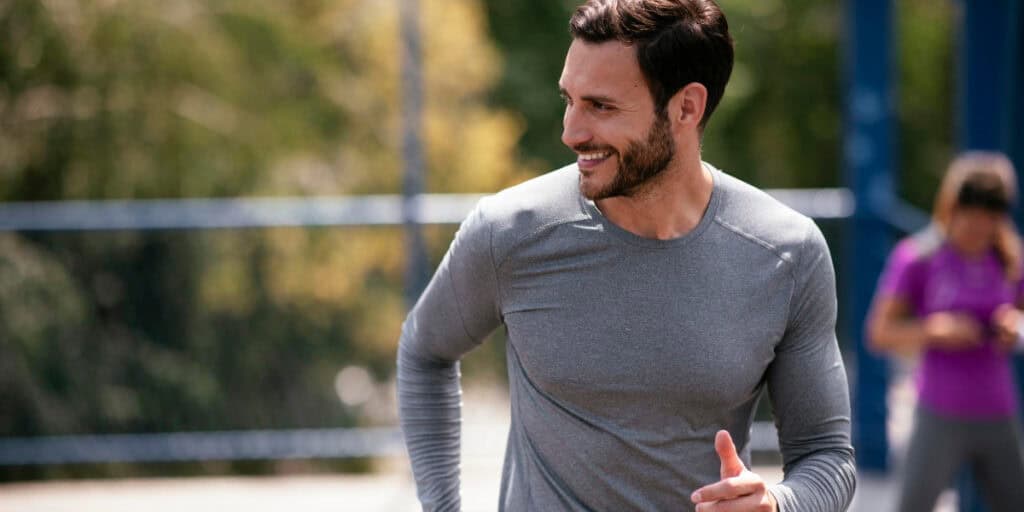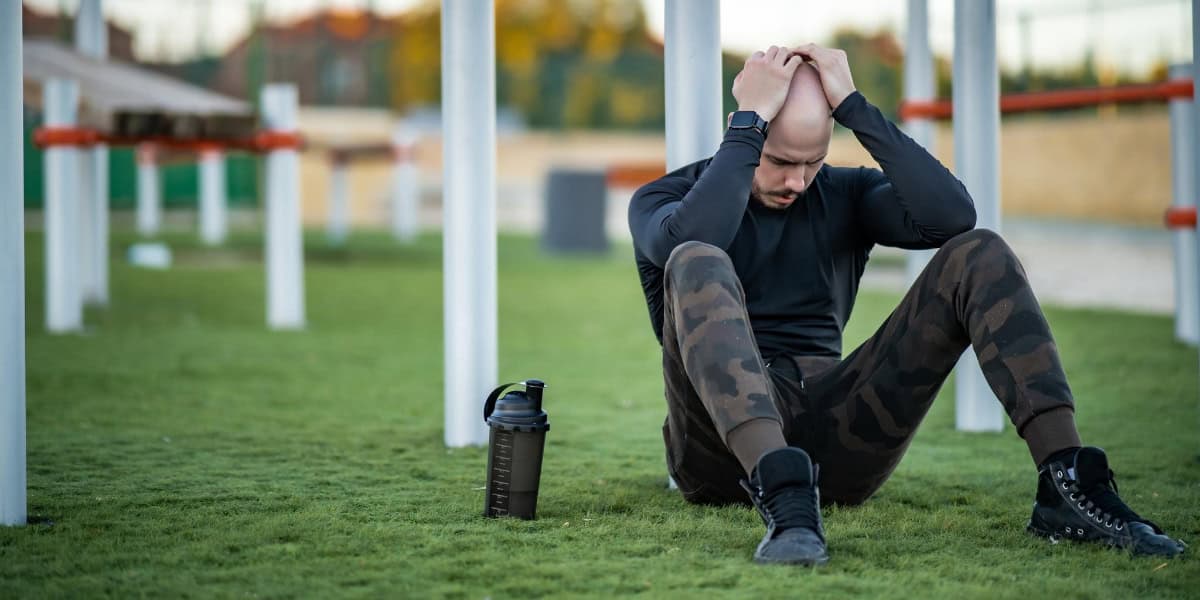Sports can be an incredibly rewarding and enjoyable experience, but it can also be a source of stress. The pressure to perform well, the fear of failure, and the physical demands of competition can all contribute to feelings of anxiety and tension.
Relaxation is important in sport as it helps to reduce stress and anxiety. It helps to improve focus, performance and overall wellbeing. Relaxing allows athletes to better cope with pressure and ultimately results in improved physical and mental performance on the field.
Fortunately, relaxation techniques can help athletes manage their stress levels and improve their performance. In this article, we will explore why relaxation is important in sport, as well as some effective techniques and benefits associated with relaxation.
Why is relaxation in sport important?
Sports can be an incredibly stressful activity. When the pressure of competition is high, the risks of experiencing stress-related issues become greater.
Several physical, mental and emotional problems can result from excess stress in sports. Here are five of the most common:
Anxiety: Stress in sports often leads to feelings of anxiety and nervousness. This may manifest itself through a whole range of emotions including fear and worry, which leads to impaired performance. In some cases, it can even lead to clinical anxiety disorders such as Generalized Anxiety Disorder (GAD) or Panic Disorder (PD).
Burnout: If a player takes on too much in their sport or does not manage their work well, they may become exhausted both mentally and physically. This can lead to burnout and depression.
Injury: Stress in sports can affect the body’s natural ability to heal itself, resulting in an increased risk of injury due to overtraining or fatigue. It can also contribute towards slower recovery times after injuries due to poor levels of nutrition and rest, which are critical for tissue healing processes.
Performance Issues: Issues may arise due to stress within sports, especially if players feel they have too many responsibilities outside their sport. For example, they may have to work long hours or study. This could cause players to feel less motivated during training sessions leading to decreased performance on game day as their minds have not been prepared correctly with adequate rest periods.
Lack of enjoyment: Too much stress over results in sports can cause athletes to have painful physical reactions, such as headaches and stomach aches. This is all made worse by low self-esteem and self-doubt, which takes away from enjoying sports, which many athletes say they enjoy.
Relaxation in sports is a psychological strategy used by athletes to manage or reduce stress-related emotions and physical symptoms during high-pressurized situations.
Various types of physical and mental relaxation strategies can be used to relax the performer. These include progressive muscle relaxation, visualizations, deep breathing and mindfulness meditation.
These techniques help decrease heart rate, reduce physical tension and increase mental focus, which can lead to improved performance.
In addition, taking time out to breathe deeply or practice other forms of relaxation has been shown to help your sports performance in the long run.
Techniques for relaxation in sport
By taking the time to relax and focus on their body and mind, athletes can maximize their performance and enjoy their sport more. Here are 7 techniques commonly used.
1. Progressive Muscle Relaxation
Progressive Muscle Relaxation is a form of active relaxation that helps athletes to go deeper with mindfulness and/or purposeful movement. It also aids in reducing stress and anxiety, relieving insomnia, reducing symptoms of chronic pain, and enhancing sports performance.
By practicing progressive muscle relaxation, athletes can improve their spinal alignment and posture and better understand where they are holding tension in their body.
Furthermore, it can help them recover faster after workouts or competitions by relieving any lingering tension or pain from previous sessions.
2. Breathing Techniques
There are many types of breathing techniques that can be used to help athletes relax in sport. Examples include rhythmic breathing, controlled breathing, deep breathing and imagery techniques.
Rhythmic breathing involves setting your own rhythm for breaths and is often seen in yoga with cyclical breaths that start long, followed by medium and short breaths.
Controlled breathing focuses on the athlete’s diaphragm, inviting them to take deep breaths in then completely exhale out.
Deep breathing encourages positive thinking as it opens up the lungs and engages the diaphragm. Imagery techniques can help decrease arousal levels during intense periods such as competitions by focusing on specific images or scenarios that bring comfort or relaxation to the athlete’s mind-set.
3. Guided Relaxation
In guided relaxation cue words or phrases, such as “relax” or “breathe”, are repeated mentally to help create a sense of serenity and calm.
The athlete focuses on each part of their body individually while releasing any tension they may feel in that area through deep breathing.
Guided relaxation can also be combined with other techniques such as mindfulness meditation or progressive muscle relaxation (PMR).
An athlete who is familiar with self-talk can use guided relaxation techniques as part of their pre-game preparation to help them relax before the game.
An athlete who uses PMR can also include guided breathing into the process. This is done by taking deep breaths for 10 to 15 seconds at a time and focusing on each muscle group.
4. Mindfulness Meditation
Mindfulness meditation is a practice that came from the Buddhist tradition. It can be loosely defined as a state of awareness where one pays attention to what is going on around them instead of focusing on what is right in front of them.
It involves putting aside judgments of current situations, thoughts or feelings as “good” or “bad”, so that one can focus on being present in the moment without judgement.
To learn more see: What does meditation do to the brain?
Mindfulness meditation helps develop this nonjudgmental awareness, promotes calmness in potentially stressful situations, reduces reporting of depression anxiety chronic pain among other benefits.
Using mindfulness meditation in sport can help athletes develop their ability to focus under pressure. During practice sessions away from competition, they can focus on their thoughts, feelings and breath.
This will help them to stay focused on one thing at a time while allowing other things to play in the background. This will help them make better decisions under pressure when they need it most.
5. Yoga
Yoga is a traditional practice that involves the use of breathing exercises, meditation, and physical poses or postures.
It is used to improve overall health and wellbeing by bringing balance between mind, body, and spirit. Yoga can help with relaxation in sport by providing an opportunity for athletes to focus on their breathing patterns while practicing different poses that promote relaxation.
Additionally, it offers an outlet for athletes to escape from the pressures of competition and stressors of everyday life.
By incorporating yoga into their training routines, athletes can benefit from increased mental clarity as well as reduced stress levels.
This will allow them to remain focused during competitions while also being able to relax more easily when not competing at peak levels of intensity.
Furthermore, yoga’s emphasis on mindfulness can help athletes become more aware of their bodies’ needs, so they are better able to maintain proper rest cycles between workouts or competitions without sacrificing performance capabilities over time due to fatigue or injury risks associated with overworking certain muscles groups or joints unnecessarily due to lack of awareness in those areas during training sessions/competitions.
6. Biofeedback Training
Biofeedback training (BFBT) is a method that helps performers become familiar with autonomic nervous system (ANS) responses such as muscular activity, heart rate (HR), and respiration rate.
Through increased awareness of body reactions and methods such as relaxation to lessen them, athletes can enhance their performance.
Examples of electronic instruments used in BFBT include electromyographs to measure the electrical activity of muscles, heart rate monitors to measure HRs, and breath monitors to measure respiration rates.
Visual or auditory feedback from these instruments can help performers become aware when they need to relax their muscles or breathe more slowly.
Additionally, meditation techniques such as progressive muscle relaxation (PMR) can be used in conjunction with BFBT for enhanced results.
7.Visualization Techniques
Visualization techniques are a powerful tool that can be used to help athletes relax and focus on their performance. Visualization involves mentally rehearsing a desired outcome or skill, such as executing a perfect jump shot or running the perfect race.
By visualizing success, athletes can create positive mental images of themselves performing at their best. This can help them to stay focused on the task at hand and reduce
Visualization techniques for relaxation in sport include:
- Creating a mental image of yourself performing successfully.
- Imagining yourself breathing easily and calmly, with no stress or anxiety.
- Seeing yourself as strong and capable, able to overcome any obstacles that may arise during competition or training sessions.
- Visualizing the success of your team members and feeling connected to them through this process leads to more energy being shared between you as a team on the field/court/etcetera.
Benefits of relaxation techniques in sport
Relaxation techniques are an important part of any athlete’s training regimen. Relaxation helps athletes to reduce stress and anxiety, improve focus, and increase performance.
By incorporating relaxation into their daily routine, athletes can gain a competitive edge and reach their peak performance levels. Here are some of the benefits of relaxation techniques in sport:
1. Reduced stress and anxiety
Relaxation techniques such as meditation have been shown to reduce stress levels and cortisol levels in athletes.
This is due to the fact that it helps them stay calm under pressure, focus better, and maintain a positive mindset.
Practising meditation on a regular basis can help your body learn how to relax in stressful situations, building self-confidence and achieving a more positive mindset.
2. Improved performance
Relaxation techniques can help improve performance by reducing stress and improving focus. By reducing stress, the body is able to operate at its optimal level, resulting in better mental clarity and reduced distractions.
Relaxation also encourages deeper breathing and a slower heart rate, both of which help reduce physical fatigue and increase energy levels.
By practicing relaxation techniques regularly, individuals can experience improved concentration, reduced anxiety levels, decreased muscle tension and pain relief from headaches or backaches.
Additionally, relaxation can help reduce stress-related eating habits or sleeping difficulties that may be affecting their performance at work or school.
4. Increased concentration and focus
Relaxation techniques such as meditation can help increase concentration and focus in sport. The athlete can focus on what is going on around them instead of what they are doing.
By regularly practicing relaxation techniques, athletes can better manage their stress levels, become more aware of their surroundings, reduce distractions in the background, and focus on one task at a time.
This will ultimately lead to improved performance during competition or training sessions.
5. Improved recovery
Relaxation techniques such as meditation can help athletes recover faster from training, competition, and even injury by reducing stress levels and strengthening the immune system.
By reducing stress levels and strengthening the immune system, athletes who meditate on a regular basis can speed up recovery time for common sports injuries and reduce muscle fibre tears caused by physical training or injury.
6. Increased energy levels
Relaxation techniques such as deep breathing, meditation and visualisation can help reduce stress levels and improve energy levels in sport.

When the body is under less stress, it has the ability to produce more energy, thereby improving performance in sport.
7. Improved well-being
Relaxation techniques such as deep breathing, meditation, and visualization can help athletes to stay focused and calm during competitions. These techniques can also improve an athlete’s overall well-being by reducing stress levels and increasing relaxation.
8. Reduced stress-related injuries
Relaxation techniques such as meditation can reduce stress-related injuries in sport.
A study published in the Journal of sport and exercise psychology concluded
Mindfulness training may reduce the injury risk of young soccer players due to improved mindfulness and attention control and reduced sport anxiety.
By reducing stress levels, athletes who practice meditation will be able to remain calm under pressure and focus better on their performance.
Meditation can also help the body heal faster from training or competition injuries. By strengthening the immune system, it can help the body heal faster and prevent injuries from happening again.
9. Improved coping skills
Relaxation techniques have been proven to have a positive impact on sports performance, as they reduce stress levels and decrease the levels of the stress hormone cortisol.
By being relaxed and centered, you are able to remain calm under pressure and focus better.
Practicing such techniques regularly means your body will learn how to relax in stressful situations, building self-confidence and ultimately achieving a more positive mindset. This can help athletes cope with any unhelpful emotions associated with competitive sport better than before.
10. Improved relationships
By reducing stress levels, athletes can become more focused on their performance and interactions with others.
Additionally, relaxation techniques can help them cope with any difficulties or challenges they may be facing in their sport or relationships.
What are the Techniques and Benefits of Relaxation in Sports?
In sports, the importance of relaxation techniques cannot be overstated. Incorporating deep breathing, visualization, and progressive muscle relaxation can help athletes reduce anxiety and improve performance. These techniques also aid in faster recovery, muscle repair, and overall well-being. Embracing relaxation techniques is vital for achieving optimal athletic success.
How Does Relaxation in Sport Differ from Recreation?
Relaxation in sport and recreation may seem similar, but the relaxation versus recreation difference lies in the intention. In sport, relaxation aims to enhance performance and recovery. Recreation, on the other hand, is about leisure and enjoyment. Both are important for overall well-being, but serve different purposes.
How Does Relaxation Techniques in Sport Help Reduce Stress?
Relaxation in sports is crucial for athletes to perform at their best. By employing techniques such as deep breathing, meditation, and visualization, athletes can learn how relaxation reduces stress. Reducing stress not only improves physical performance but also enhances mental focus and resilience, ultimately leading to a competitive edge.
How Does Deep Tissue Massage Contribute to the Importance of Relaxation in Sports?
Deep tissue massage plays a crucial role in the relaxation of athletes. The difference between relaxation and deep tissue lies in the intensity of pressure applied. Deep tissue massage targets specific areas to release tension and improve mobility. This contributes to overall relaxation, reducing the risk of injury and enhancing sports performance.
What Are the Techniques and Benefits of Relaxation in Sports?
The importance of relaxation techniques in sports cannot be overstated. By practicing techniques like deep breathing, visualization, or progressive muscle relaxation, athletes can reduce stress, improve focus, and enhance performance. These methods help in recovery, injury prevention, and overall well-being, making relaxation essential for athletes of all levels.
FAQ
What is relaxation and why is it important in sport?
Relaxation is the act of releasing tension in the body and mind. It involves slowing down your breathing, relaxing your muscles and calming your thoughts.
Relaxation is important in sport because it helps athletes maximize their power while reducing their fatigue levels.
By improving their ability to quickly relax their muscles, elite sprinters are able to generate more force with less energy consumption.
Additionally, stress and anxiety can have debilitating effects on athletes both mentally and physically; therefore it is important for them to find ways to manage these emotions so that they do not cause them to get worse.
How does muscle relaxation help in sport?
Muscle relaxation helps in sport by reducing anxiety and stress, which can lead to a variety of physical and mental health issues. By practicing muscle relaxation techniques such as Progressive Muscle Relaxation (PMR), athletes can reduce their levels of anxiety and stress, which will also help them perform better.
By practicing muscle relaxation techniques such as PMR, athletes can reduce their levels of anxiety and stress, leading to fewer physical health issues such as headaches or body pains. They will also be able to breathe more easily during competition since their muscles will be more relaxed. Furthermore, the reduced levels of anxiety and stress can help athletes perform better due to less internal distractions.
What are the effects of relaxation on stress levels?
Relaxation can help reduce stress levels by calming the body and redirecting energy in a positive way.
By practicing relaxation techniques such as meditation, stress levels can be reduced, allowing athletes to remain calm under pressure and focus better. Additionally, decreased levels of the stress hormone cortisol have been associated with meditation practice.
How can relaxation help performance in sport?
Relaxation techniques can help athletes to manage their emotions, reduce stress and anxiety, and improve their overall wellbeing.
This helps to create a more relaxed environment in which athletes can perform at their best. Research suggests that relaxation techniques such as guided breathing with imagery can even have a positive effect on sports performance.
What are the differences between relaxation and meditation?
Relaxation and meditation both involve the practice of letting go of stress and tension. However, relaxation uses breathing and visualization to focus on releasing physical tension, while meditation uses breathing exercises to focus on releasing mental stress.
Relaxation involves a body scan that has both a mental component (visualization) and a physiological component (breathing). Meditation is exclusively focused on releasing mental stress through breathing exercises.
How can relaxation be used to reduce fatigue?
Relaxation can be used to reduce fatigue by helping athletes to manage their energy levels and focus on the task at hand.
Deep breathing, visualization, and guided imagery can help athletes to relax their muscles and clear their minds of any distractions.
This allows them to focus on the task at hand and conserve energy for when it is needed most.
For example, here is a simple exercise you can do anytime, anywhere:
1. Inhale slowly through your nose, drawing air deep into your lungs.
2. Hold your breath for about five seconds and then release it slowly.
3. Repeat this exercise five to 10 times, repeating “energy in” while inhaling and “fatigue out” while exhaling with each exhalation.
4. Isolate and contract muscle groups, creating tension for eight to 10 seconds, then relax the muscles and let the tension go.
5 . Concentrate on the contrast between tension and relaxation in any specific muscle group using words/phrases like “relax”, “let go”, “release”, or “stay calm”
This technique can be used by athletes at all levels of competition to reduce stress levels before competing or during practice sessions by focusing on each breath taken in or out. This helps them stay relaxed throughout their performance.
What is the best relaxation technique for athletes?
Relaxation techniques such as guided imagery and visualization can help athletes deal with their anxious feelings positively.
Progressive muscle relaxation is another popular method which involves tensing and relaxing specific muscles repeatedly to pinpoint where tension is occurring.
For athletes looking for help with practicing relaxation techniques, it is recommended that they seek out resources such as podcasts or audio resources that can guide them through Progressive Muscle Relaxation (PMR). Additionally, it may be helpful to find someone who specializes in relaxation techniques to provide one-on-one guidance.
Sources
https://www.semanticscholar.org/paper/d712aee398bcfbad251e289ae47943125f71049b




